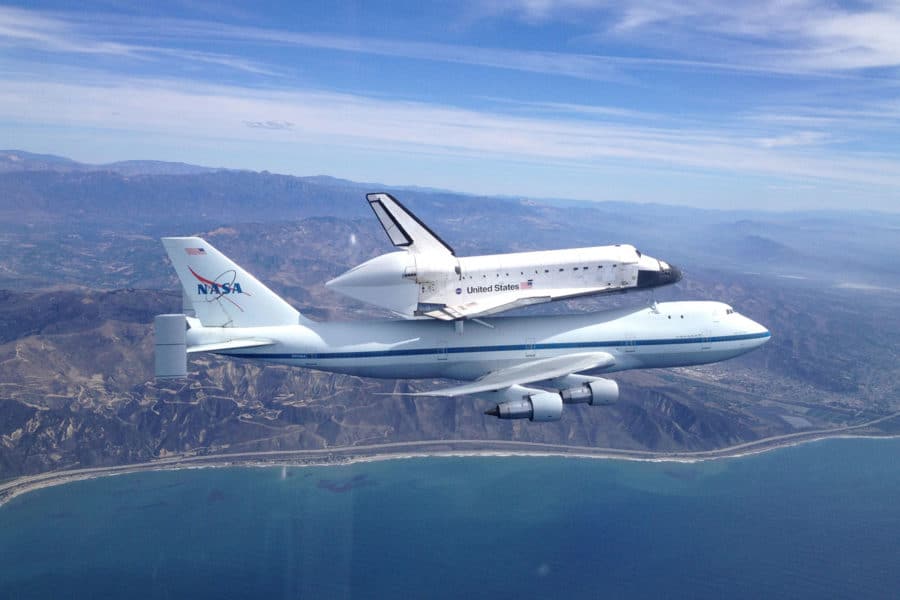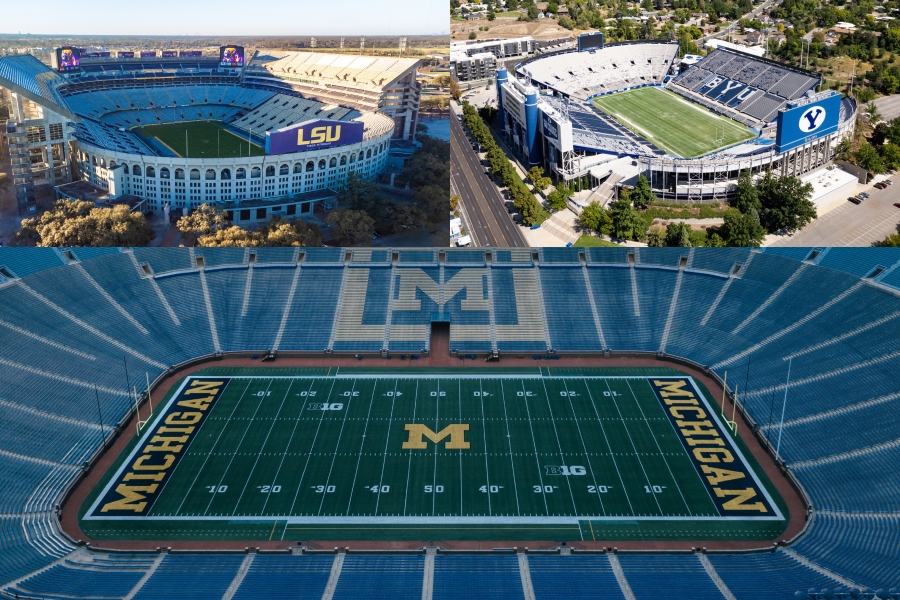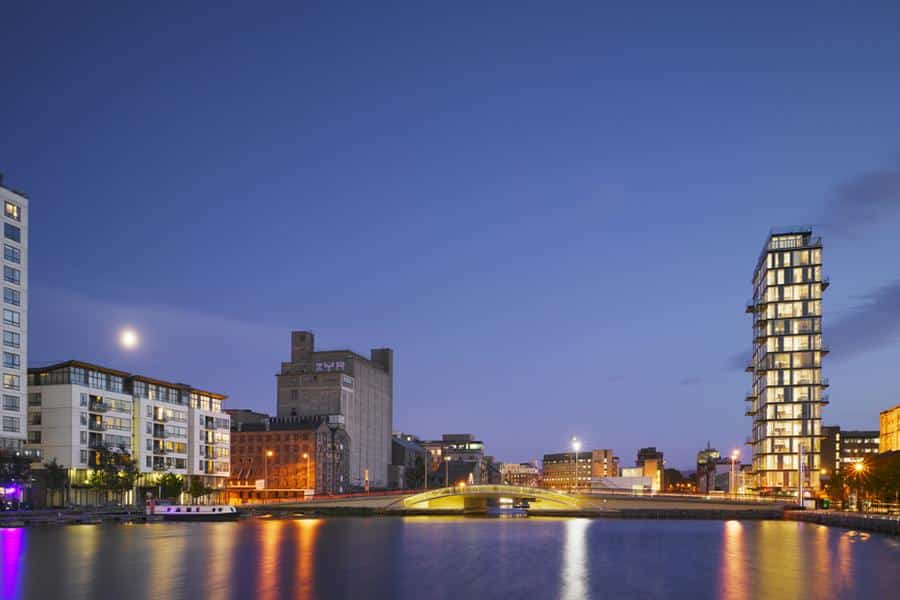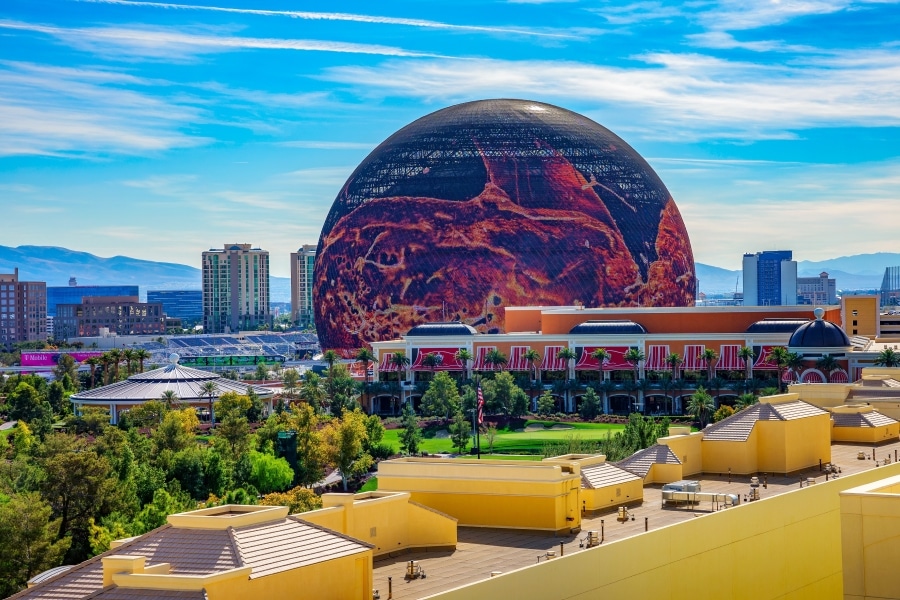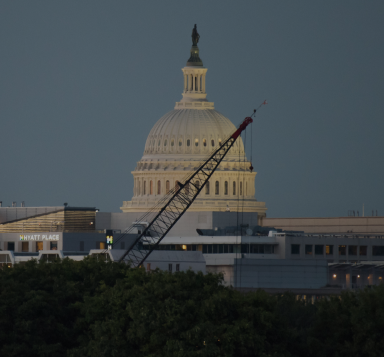After 25 missions, the Space Shuttle Endeavour was formally decommissioned in 2011. Shortly after, NASA announced that the California Science Center would become Endeavour’s new permanent home, where it has been on display for the public to enjoy since 2012.
Having previously completed both the master plan and design of the original California Science Center building (Phase 1) and the west wing, Ecosystems (Phase 2), the Los Angeles office of ZGF Architects was thrilled to be selected to also design the center’s third phase, the Samuel Oschin Air and Space Center, a new east wing which will become the shuttle’s new home.
Scheduled to open in 2018, the new building will include separate Air, Space, and Space Shuttle galleries, displaying vintage aircraft, space-related artifacts, and of course the main attraction, Endeavour.
Moving Endeavour from LAX to the Science Center was quite an undertaking, but designing and building the shuttle’s display gallery has proven to be just as challenging.
A Room with a View
One of the most impressive and surprising aspects of the project is that the shuttle will eventually be displayed vertically in its launch position, along with two solid rocket boosters and NASA’s last remaining external tank. The scale of the external tank is immense: It towers over 15 stories high (153.8 feet) erect and tips the scales at 66,000 pounds. Its massive size and delicate nature led the Science Center to opt to transport it from New Orleans to Los Angeles via barge making passage through the Panama Canal. Designing a space that can accommodate both the behemoth external tank and the space shuttle that is more than double its weight and due to be positioned as if poised for launch was not an easy task. As project manager Kimberly Kilgour explains, “The fact that Endeavour is going to be positioned vertically in the launch position is a big deal. Although the main air and space galleries will be horizontal, the shuttle’s display area will be a 190-foot-tall, conical-shaped space, which made designing the viewing areas a challenge. To best leverage the vertical orientation, we designed viewing areas on three different levels. The very top viewing platform will have a glass floor, where small groups can look down into the cockpit, while the ‘gantry tower’ viewing area mimics an actual NASA launch tower and offers a direct view into the shuttle’s payload bay.”
An Immersive Experience
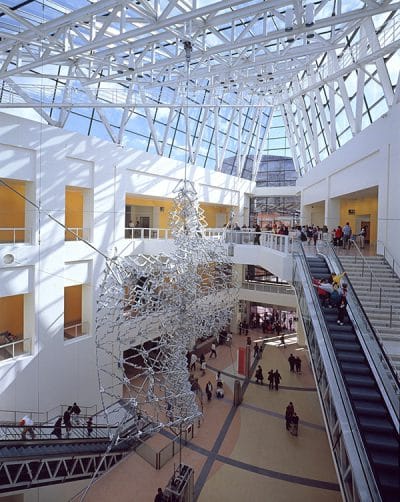
Perhaps one of the most interesting features of the project may also be its most enjoyable. As Kilgour reveals, “One of the most unique aspects of this project is an immersive user experience featuring a two-story, curved slide, designed to mimic the orbiter’s re-entry into the atmosphere. It’s definitely something I haven’t seen on any of the other projects I’ve worked on.” The idea of incorporating a slide into the shuttle hall experience was suggested by the Science Center during the programming phase of the project and inspired by a visit to the Kennedy Space Center which features a small slide as the final portion of an interactive experience designed to simulate a space shuttle landing. Endeavour’s slide will be tubular, with S-shaped curves suggestive of Endeavour’s re-entry path. As they travel down, visitors will plunge 45 feet from the darkness of outer space, through the Space Shuttle’s characteristic double-sonic boom, and into the light of the Earth’s atmosphere. The design team is enjoying the challenge of making sure the slide has the necessary structural support, while steering clear of building columns and exhibits and still mimicking Endeavour’s re-entry path.
Going Vertical
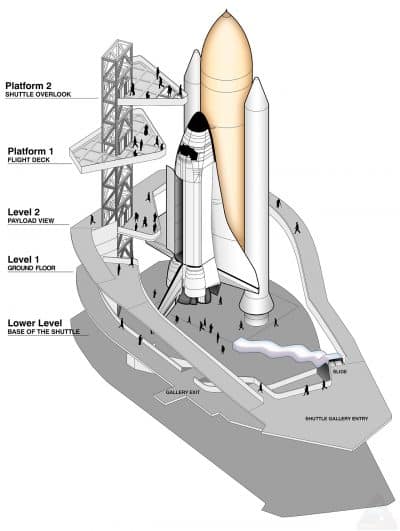
Creating the gallery for a gigantic space shuttle in launch position is not the only hurdle to overcome: “Ever since they first brought Endeavour to the Science Center, it’s been in a horizontal position. So one of the really big issues we’ve been grappling with is how to join the orbiter with the external tank and rocket boosters to create the ‘stack,’ or completed space shuttle, and then get them into the building. Our plan is to assemble all the pieces horizontally, then back it into the building and tilt it up,” says Kilgour. To do this, they’ll employ a custom-made cradle to support the gigantic double pivot that will occur to get it in the vertical position. And, with the solid rocket boosters weighing more than 100,000 pounds each and arriving in a dozen large pieces, assembling them into the cradle will be a complex operation, requiring the highest level of precision. Once the boosters are bolted to the cradle they’ll serve as the primary support for the rest of the components during the lifting exercise. They’ll also support the completed stack once it is on the isolator pad inside the building.
When the external tank arrives, it will be followed by a separate delivery of over 100,000 pieces of hardware required to attach it to the orbiter. The pieces range from 25-foot wide structural attachment beams, to thousands of nuts, bolts, and washers, all of which will need to be precisely reassembled. “Unfortunately, there are no instructions, so it will be a massive learning exercise,” Kilgour adds. Once the orbiter, external tank, and solid rocket boosters are attached, the completed stack will weigh in at just under 450,000 pounds.
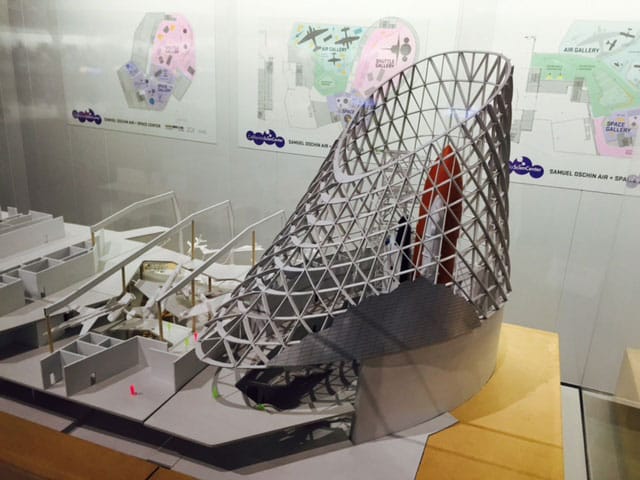
Protecting a National Treasure
Housing this historic artifact in the heart of earthquake country means that protecting it from a seismic event is extremely important. As Kilgour describes, “It’s been an interesting challenge to seismically isolate the shuttle separately from the building. Our solution was to have the shuttle sitting on an eight-foot-deep concrete pad, with six seismic base isolators below it so it can move independently of the building.” Each of the solid rocket boosters will be bolted to the isolator pad using the same four hold down bolts that were used on the launch pad at the Kennedy Space Center. ZGF also had to ensure there’s enough clearance for the viewing galleries, because the base and top can move three feet and six feet in any direction, respectively.
You can learn more about the Endeavour exhibit by visiting the California Science Center’s website.
Featured image courtesy of NASA/Jim Ross

